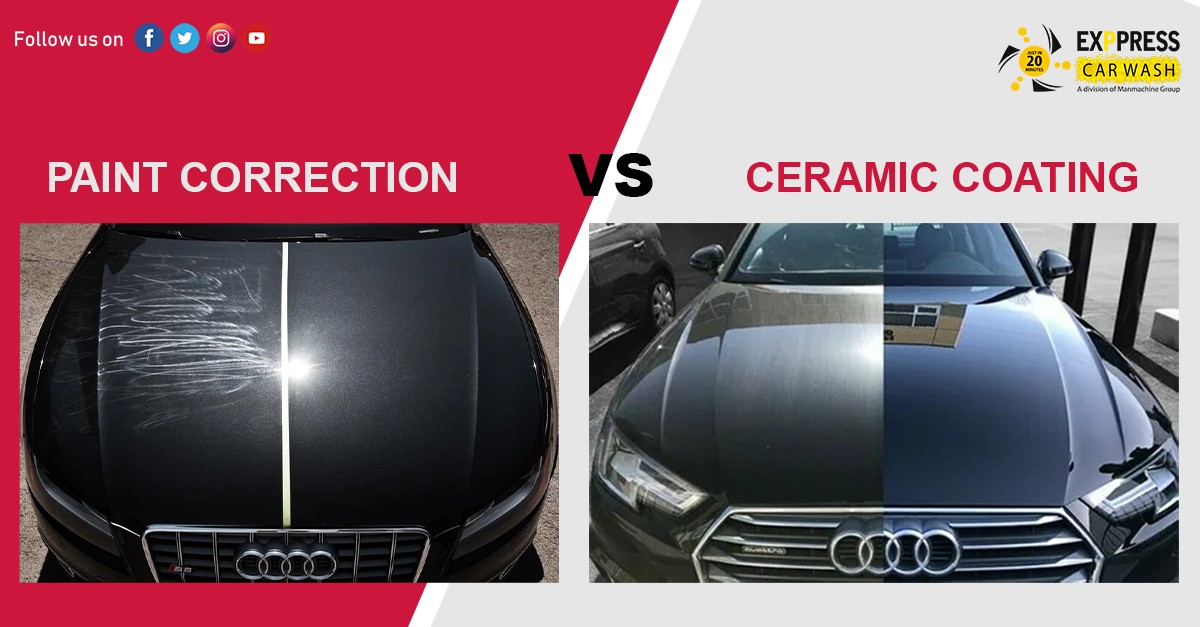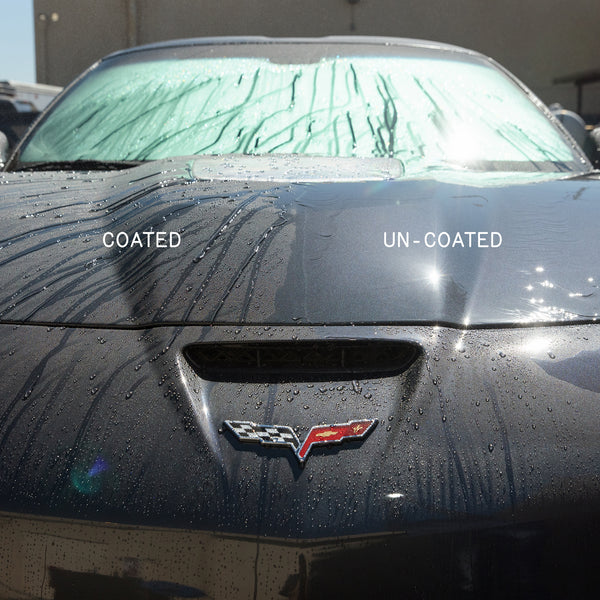Ceramic Coating: Shield Your Car from Environmental Threats with Ease
Ceramic Coating: Shield Your Car from Environmental Threats with Ease
Blog Article
Discovering the Science Behind Ceramic Finish and Its Effect On Cars And Truck Detailing
The application of ceramic finish in car outlining stands for a substantial advancement in automotive care, rooted in its advanced chemical homes, largely silica dioxide and titanium dioxide. Understanding the science behind these materials discloses not just the safety advantages they provide however likewise their function in boosting a lorry's visual longevity. As we check out the ins and outs of the application process and the lasting effects for lorry upkeep, it comes to be clear that the selection of ceramic coating can fundamentally alter one's approach to automobile care. What considerations should be made before dedicating to this transformative service?
What Is Ceramic Finishing?
Ceramic finishing is a modern remedy that has gained appeal in the vehicle detailing market for its ability to give lasting defense for car surface areas. This sophisticated protective layer is commonly composed of silica dioxide (SiO2), which creates a strong bond with the automobile's paint, creating a long lasting shield against ecological pollutants. Unlike typical wax or sealants, ceramic layers provide premium resistance to UV rays, chemical stains, and physical abrasions.
The application of ceramic finish involves a careful process, where the car's surface area is completely cleaned and decontaminated before the covering is used (Ceramic Coating). When treated, the finish improves the car's gloss, depth, and quality, providing a showroom-quality coating that lasts for years. One of the essential benefits of ceramic finish is its hydrophobic residential or commercial properties, which push back water and dust, making maintenance less complicated and decreasing the frequency of laundries
The Chemistry of Ceramic Covering
An essential element of ceramic coating hinges on its chemical structure, largely characterized by the visibility of silica dioxide (SiO2) This substance is integral to the development of a sturdy, protective layer that bonds chemically to the vehicle's surface area. When used, the SiO2 molecules go through a procedure known as polymerization, where they create a network of interconnected frameworks. This leads to a durable, hydrophobic surface that drives away water and pollutants.
In addition to SiO2, several ceramic finishings include titanium dioxide (TiO2) and other ingredients to enhance their efficiency attributes. TiO2, for example, contributes to raised solidity and chemical resistance. The communication in between these substances develops a distinct molecular framework that provides a high degree of security against ecological factors such as UV rays, acid rainfall, and oxidation.
In addition, the application process often includes a thorough preparation of the surface area to ensure optimal bond of the finishing. This chemistry not only guarantees a lasting coating yet additionally improves the visual charm of the automobile. Comprehending the elaborate chemistry behind ceramic coverings is necessary for detailing professionals that intend to supply exceptional protection and longevity for their customers' lorries.
Advantages of Ceramic Coating
While describing specialists commonly highlight the advantages of ceramic finishings, their benefits extend far beyond visual appeals. Ceramic coatings develop a hydrophobic surface that repels grime, dust, and water, considerably reducing the frequency of washes and the effort needed to maintain a lorry's look.
Moreover, ceramic coatings enhance the longevity of the car's finish. Unlike typical waxes or sealers, which may last a few months, ceramic coatings can endure for years, supplying a long-term solution for auto care. This toughness converts to cost financial savings, as proprietors are less likely to require regular reapplication.
Additionally, ceramic coatings are resistant to chemical discolorations and etching, which can happen from acidic substances like bird droppings or tree sap. This resistance not just protects the lorry's aesthetic appeals however additionally minimizes prospective damages - Ceramic Coating. On the whole, the investment in ceramic finishing supplies cars and truck proprietors a substantial return in terms of security, simplicity of upkeep, and long-lasting aesthetic appeal, making it an increasingly preferred selection in the realm of vehicle outlining
Application Process Described

When the surface is adequately prepared, the ceramic layer can be applied. It is usually performed in a controlled atmosphere, such as a garage or outlining bay, to prevent contamination from dust and debris. Making use of an applicator pad, the technician uses the covering in little sections, working in a crosshatch pattern to make certain even coverage. It is important to adhere to the manufacturer's directions relating to application thickness and curing times.
When treated, the ceramic finishing creates a strong bond with the paint, offering enhanced defense and a shiny finish. Correct application is vital to take full advantage of the longevity and efficiency of the ceramic finishing.

Long-lasting Influence on Automobile Treatment
The lasting impact of ceramic coating on car treatment is substantial, as it basically alters just how proprietors preserve their lorries. By developing a durable, hydrophobic layer on the automobile's surface, ceramic coatings minimize the adherence of dirt, grime, and pollutants. This building decreases the frequency of washing called for, ultimately saving water and cleaning products.
Furthermore, the UV protection provided by ceramic layers aids to avoid oxidation and fading of the automobile's paint, preserving its visual appeal and resale value in time - Ceramic Coating. This protective obstacle also reduces the chance of scratches and swirl marks, which prevail issues in typical paint finishes
Moreover, ceramic coverings assist in less complicated maintenance, enabling proprietors to clean their vehicles with marginal initiative. The smooth surface area makes it tough for contaminants to bond, allowing visit the website simpler removal during regular cleansing.
In the future, the investment in ceramic finish may lead to set you back savings in lorry care products and services. On the whole, the sustaining advantages of ceramic finishings not just enhance the appearance of vehicles however additionally contribute to a much more lasting and reliable technique to automobile upkeep.
Conclusion
Finally, the application of ceramic covering represents a significant development in vehicle describing, driven by its anonymous unique chemical make-up of silica dioxide and titanium dioxide. This technology not just enhances the aesthetic allure of vehicles but additionally supplies durable protection versus environmental hazards and use. The long-lasting benefits, consisting of lowered maintenance frequency and boosted sturdiness, underscore the value of ceramic coverings as a necessary financial investment for preserving lorry look and integrity with time.

Report this page